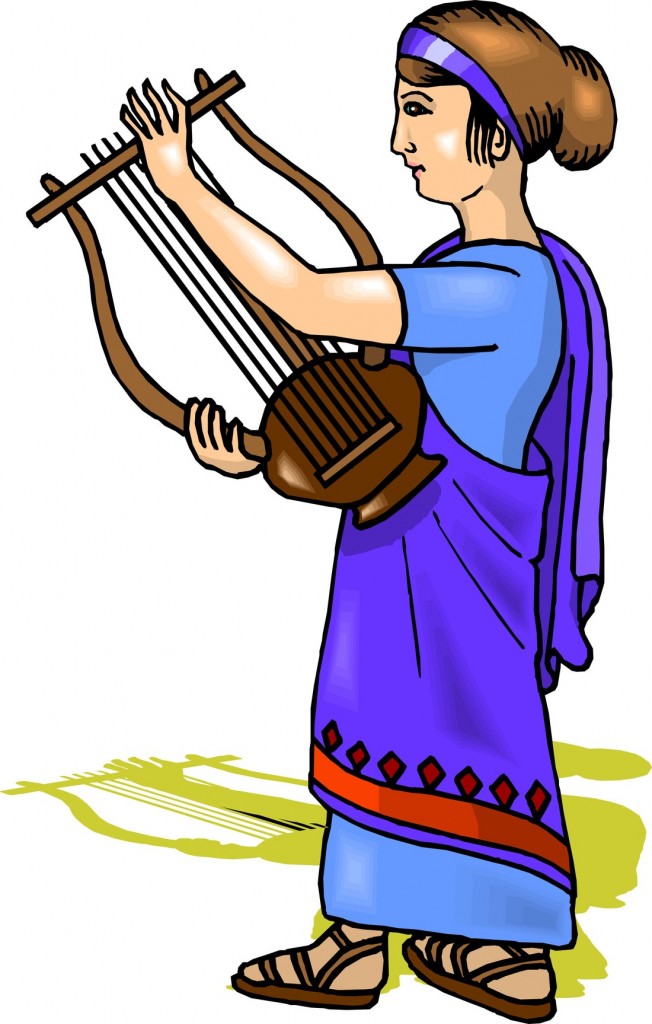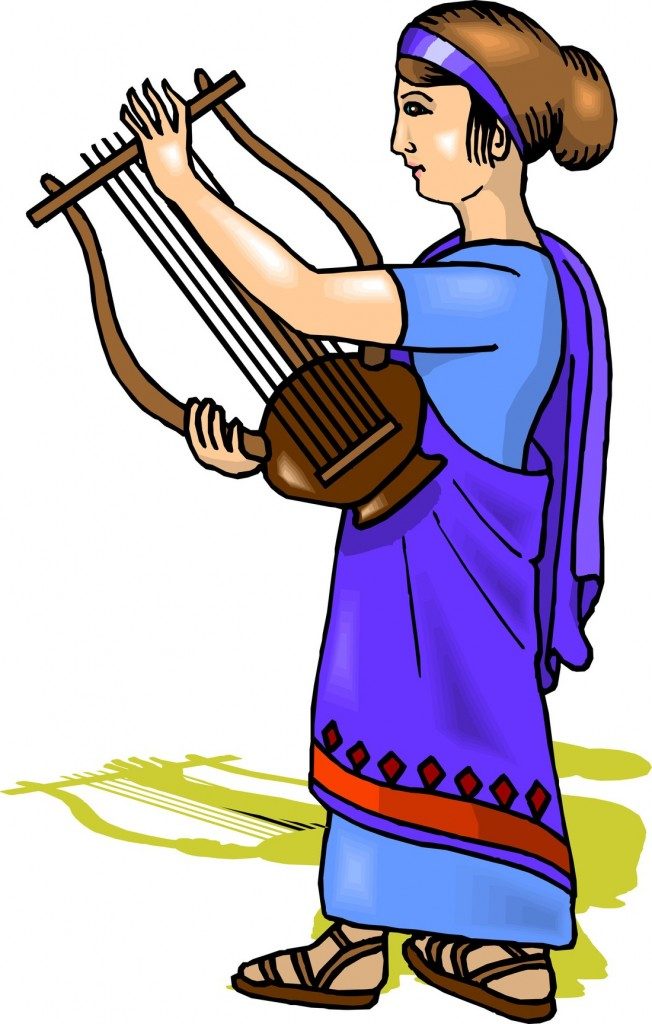Because we always wanted to know where the word “music” came from. Here are some musical word origins.
 DRUM. This word comes from the Middle Dutch term tromme, which is believed to be onomotopaeic in origin. It became the English drum, as a noun, in the early 1500s.
DRUM. This word comes from the Middle Dutch term tromme, which is believed to be onomotopaeic in origin. It became the English drum, as a noun, in the early 1500s.
PSALM. The old Greek verb psallein meant “to pluck a stringed instrument.” That became psalmos, which meant something along the lines of “the sound of a harp,” and then came to mean a song, especially a sacred song of the Jewish tradition, as in the psalms of King David.
DOO-WOP. This music style, begun in the 1950s and characterized by rich vocal harmonies, was named for the nonsense syllables sung behind the lead. First song that actually had the phrase “doowop” in it: “When You Dance,” a 1955 hit by the Turbans. It didn’t become an official word, however, until 1969.
MUSIC. It became an English word around A.D. 1250. It comes from the Middle French musique, which came from the Latin musica, which came from the Greek mousikos, which referred to any art ruled by Zeus’s nine daughters who protected the arts, known as the Mousae, or Muses.
TREBLE. From the Latin triplus, meaning “triple.” It was first used as a musical term in English the 1300s, describing the third, and highest, part in three-part harmony. Today it refers generally to the higher frequencies in music (as opposed to the lower bass frequencies).
SEA SHANTY. Shanties are songs sung by sailors in a tradition going back at least to the 1500s. They’re often call-and-response songs and were used like other work songs—to establish a rhythm for repetitive tasks and to help keep the crew’s spirits up. An example you probably know: “Blow the Man Down.” (“Give me some time to blow the man down.”) The term comes from the French chantez, meaning “Sing!” (the command from of chanter, “to sing”). It became an English word in the 1860s.
CHORD. From the Middle English cord, which was simply a shortened version of accord. The musical meaning, which is three or more notes played simultaneously—or “in accord” with one another—came into use in the 1500s. The first recorded use of the written word with an “h” was in 1608.
CELLO. It’s short for the Italian violoncello. The Italian suffix –one denotes largeness, so a big viola would be a violone—and that was originally the name of the double bass (which looks like a big viola). The suffix –cello denotes smallness. In the 1600s, a new instrument, larger than a viola but smaller than a violone, came into use and was given the name violoncello—basically “big little viola.” It came into English in the early 1700s, and in the 1850s, it started being shortened to cello.
MELODY. This goes all the way back to the ancient Greeks. Their word melos meant “song,” and aoidein meant “to sing,” and they were combined to form melodia, the word for “music.” That went to Old French as melodie, and then to English in the 1200s as “melody.”
CLEF. A clef is a symbol placed at the beginning of the staff in sheet music, signifying the designated pitch range of the music (as in treble clef or bass clef). It came into English use in the late 1500s from the Latin clavis, meaning “key.”








